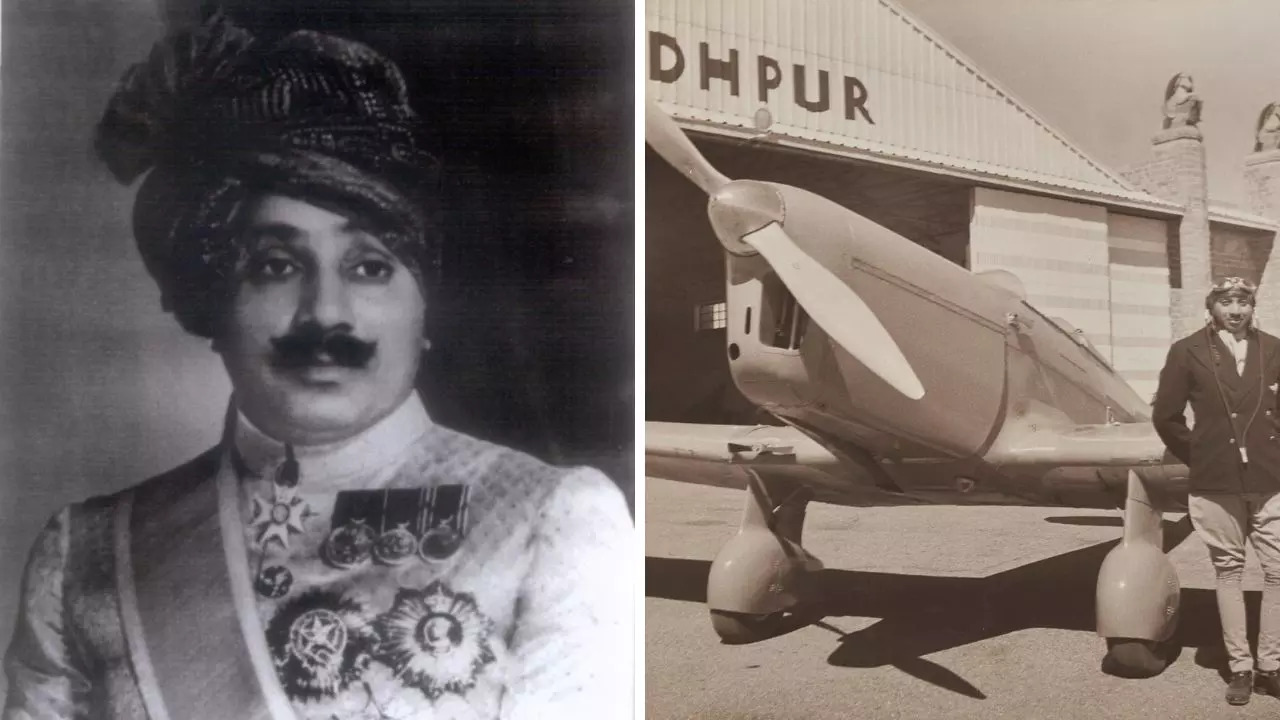Maharaja Umaid Singh. (Photo: Wikimedia Commons and Facebook/Mehrangarh Museum Trust)
From owning luxury cars to airplanes, the maharajas of the princely states of the early 20th century loved to live life in grand style. Umaid Singh (1903-1947), the 37th Maharaja of the princely state of Jodhpur (now Rajasthan), was passionate about aviation. He is credited with the emergence of aviation in Jodhpur, having ascended the throne at the age of fifteen in 1918.
According to the Mehrangarh Museum Trust, “Maharaja Umaid Singhji Sahib was the first Indian prince to be granted an ‘A’ level flying licence.” He graduated from the Royal Air Force Academy in Cranwell.
In 1923, Umaid Singh formally assumed power from the regency council headed by his uncle, Sir Pratap Singh. A little over a year later, the twenty-year-old Maharaja established a Flying Department to promote aviation in his state. An ambitious process of building airfields began in 1924 and was completed in 1931. India“The most advanced aerodrome in the country was constructed at Jodhpur at a cost of Rs 136,830 crore and a satellite aerodrome was constructed at Utterlai at a cost of Rs 9,610 crore. This was followed by the construction of a large network of aerodromes across the state. By 1931, there were about fifteen airstrips spread across the territories of Jodhpur,” a newspaper said. Jodhpur and the plane: aviation and diplomacy in an Indian state 1924-1952 by Aashique Ahmed Iqbal.
He established the Jodhpur Flying Club In 1931, the Maharaja is shown standing next to the Percival Gull VT-AGV, a monoplane specially modified for him. Powered by a 200-horsepower Gipsy 6 engine, it was fitted with the latest instrumentation for blind flight. The normally enclosed cockpit was replaced by two open cockpits, each fitted with a sporting windscreen. Maharaja Umaid Singh.
It is also credited with contributing to early commercial air routes, as the airfield was located at a key point on the route connecting Europe with Southeast Asia and Australia.
Disclaimer:
The information contained in this post is for general information purposes only. We make no representations or warranties of any kind, express or implied, about the completeness, accuracy, reliability, suitability or availability with respect to the website or the information, products, services, or related graphics contained on the post for any purpose.
We respect the intellectual property rights of content creators. If you are the owner of any material featured on our website and have concerns about its use, please contact us. We are committed to addressing any copyright issues promptly and will remove any material within 2 days of receiving a request from the rightful owner.

